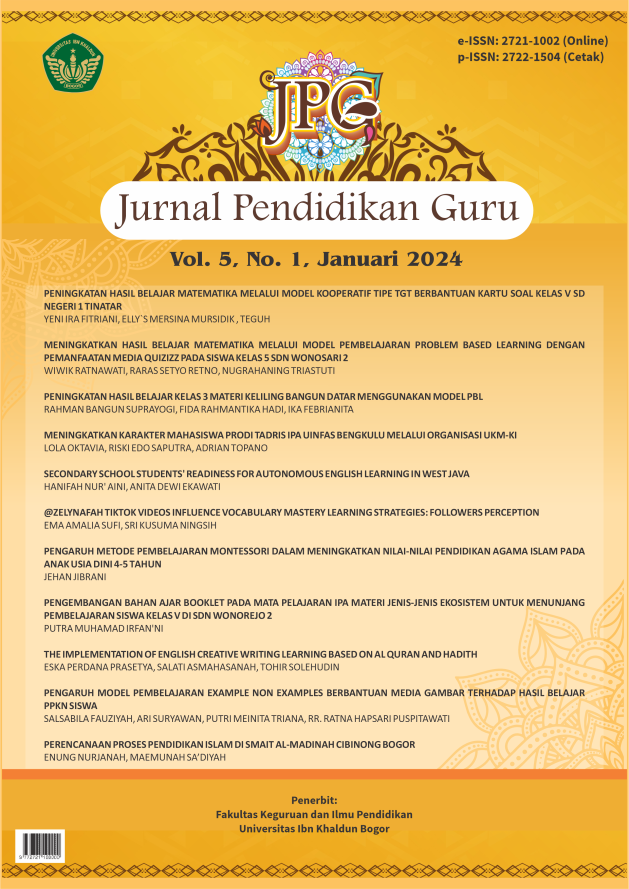MENINGKATKAN HASIL BELAJAR MATEMATIKA MELALUI MODEL PEMBELAJARAN PROBLEM BASED LEARNING DENGAN PEMANFAATAN MEDIA QUIZIZZ PADA SISWA KELAS 5 SDN WONOSARI 2
DOI:
https://doi.org/10.32832/jpg.v5i1.14804Abstract
By using Quizizz media and a problem-based learning model, this study aims to improve the mathematics learning outcomes of fifth grade students of SDN Wonosari 2. A classroom action research design with a structured action cycle was used in this study. V grade students of SDN Wonosari 2 in the second semester of the 2022/23 school year were the subject of this study. Student learning outcomes in mathematics are the focus of this study. While the instrument used for data collection is a math learning outcomes evaluation test. Descriptive analysis is the method of data analysis. The average value of mathematics learning achievement at least KKM = 75 with 85 percent completeness is the benchmark for the success of this study. The results obtained from this study are before being given action or pre-cycle the average math learning outcomes of 56.25 and only 5 students or 31.25% are complete. In cycle I it increased, the average student math learning outcomes were 70 and there were 8 students or 50% who completed learning math. While in cycle II, the average student learning outcomes reached 86.25 and there were 14 students or 87.5% who completed learning mathematics. This study shows that using the Problem Based Learning learning model using Quizizz media can improve the learning outcomes of mathematics data collection and presentation material.
Downloads
Published
How to Cite
Issue
Section
License
Copyright (c) 2023 Wiwik Ratnawati, Raras Setyo Retno, Nugrahaning Triastuti

This work is licensed under a Creative Commons Attribution 4.0 International License.
Authors grant the journal copyright of the work licensed under a Creative Commons Attribution License that allows others to share the work with an acknowledgement of the work's authorship and initial publication in this journal.

















